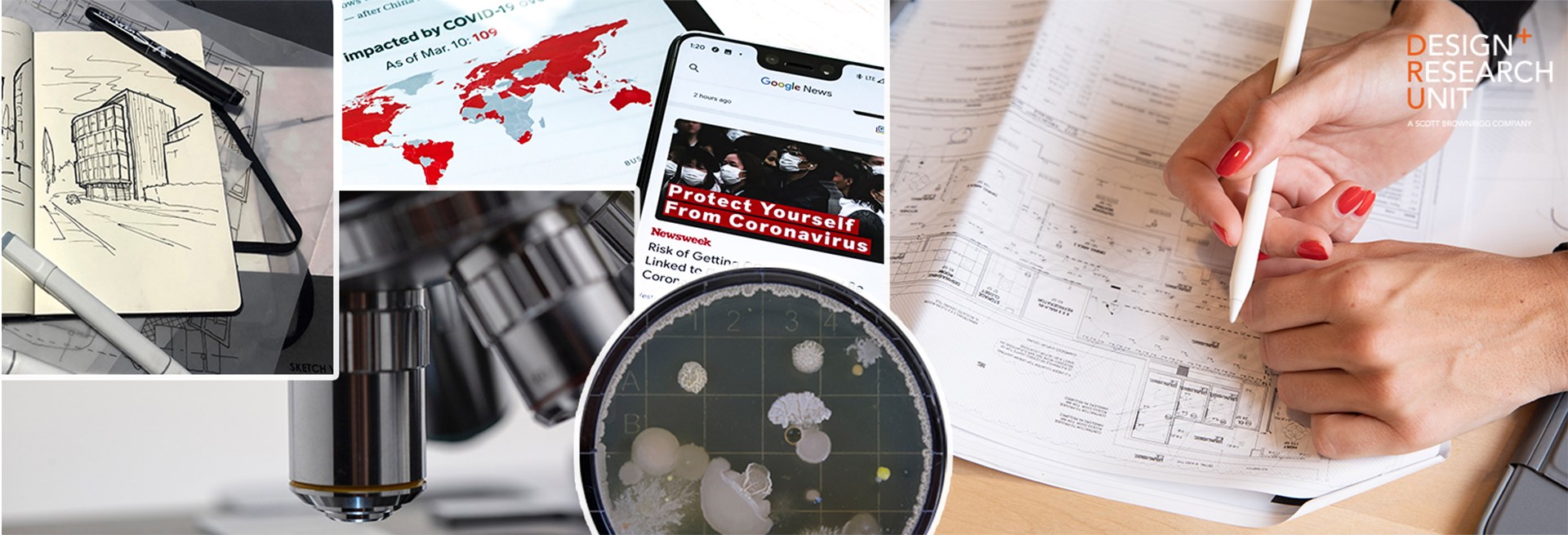Scott Brownrigg's Design Research Unit diverts its entire focus to minimising the spread of contagion through architectural design in the built environment



The global pandemic of the COVID-19 virus is changing the world. It will have outcomes that we might be able to predict, but many that we cannot even begin to guess. What is clear, is that it will change the way in which we live, work and socialize together, even after we return to normal conditions – whatever that new ‘normal’ might be.
A fundamental question being asked is how can we limit the spread and impact of future epidemics? Imperial College London has looked at the connection between bats (carriers of coronavirus) and ground mammals – but insists that neither are independently or mutually to blame, that the real cause is changes in human behaviour. Given that much of our behaviour is dictated or at least influenced by our environments - how can new building technologies, building typologies and community engagement projects inform these necessary adjustments in behaviour?
This question is being addressed by global architectural practice, Scott Brownrigg, who are diverting the efforts of their Design Research Unit into exploring this topic through their global staff in the UK, New York, Singapore and Amsterdam. And they are calling on others within the profession, academia and research world to join them in researching how this can be achieved.
”The Architectural design profession has a crucial role to play in addressing the issue of preventing the spread of disease through the spaces we inhabit and the materials we use in construction. Can the design of future buildings and environments provide one of the key solutions to both human behavior and the spread of contagions? We believe the profession has a duty to respond to this question and explore ways that can deliver a more positive future”.
Darren Comber , CEO
From research into the current trends in building densities, shapes and forms through to material science and nano-technology that not only looks at the value and properties of historic materials – copper, brass etc. but also into emerging self-repairing and self-cleaning materials using organic nano-biotic robots. If we can coat metals in PV coatings, what other coatings can we use to protect and resist virus spread?
The research will also explore automation of processes and prediction modelling using digital twins for not just buildings but whole urban environments.
“Rather than being reactionary or even passive participants or agents in this matter, we should be asking what can we do as architects and designers to change future outcomes via evidence and research based inquiry into positive change. The intention is to move significantly beyond the current trends in well-being which is often open to subjective nuance, into rigorous research based evidence that offers a potential future direction of professional practice in this regard”.
Neil MacOmish, Board Director
You're looking for exceptional architecture. We're looking for exceptional projects. Let's start a conversation
Enquire